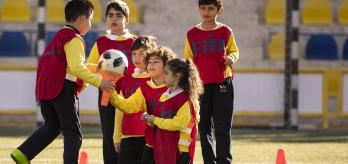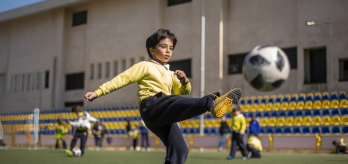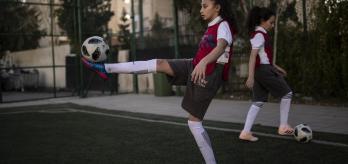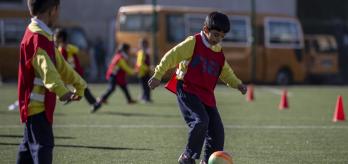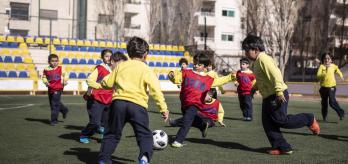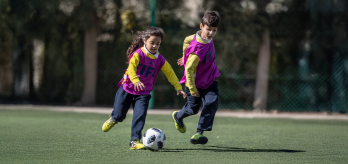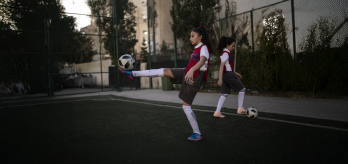In this edition of FIFA’s Grassroots Coaching Essentials series, Dr Jené Baclawski explores how grassroots coaches can use dribbling as a positive and purposeful starting point for a child’s journey in the beautiful game. The presentation focuses on simple, engaging and appropriate activities, for players aged between 4-8, that promote continuous contact with the ball, creativity, and fun to nurture a lifelong relationship with the ball.
The video below, presented by Jené, offers three coaching tips and practical examples for coaches to apply to their practice sessions. This is followed by a written summary of the presentation, accompanied with diagrams of activities that will help players become more comfortable and expressive with the ball at their feet.
Tip 1: The ball builds confidence
Beginning a session with a dribbling-focused activity can be a positive start to any practice for young players, especially at grassroots level. By being introduced to the core skill in a way that is engaging and enjoyable, children can gain confidence with the ball, which will set the tone for the remainder of the session. In this section, Jené focuses on how coaches can achieve this aim through unopposed activities:
-
Dribbling unopposed: Allowing children to dribble without an opposing defender allows them to have plenty of touches of the ball, boosting their confidence and control.
-
Adapt to players’ needs: Coaches should modify each activity to suit their players' needs, ensuring that each child is appropriately challenged regardless of their skill level.
-
Keep it competitive: Introducing an element of competition enables players to practise their skills at a quicker tempo while keeping them engaged.
Tip 2: Encourage creativity
At this stage of a player’s development, it is important for coaches to not only build a sound technical foundation but also to nurture a sense of freedom and expression in young players. Dribbling is a great way to do this as it naturally encourages them to explore different movements with the ball at their feet. Here, Jené highlights how coaches can create the right conditions for creativity to flourish:
-
Give players freedom: Giving players freedom of expression during practice enhances their creativity and allows them to develop their individual style of play.
-
Allow natural exploration: Coaches should encourage players to discover which techniques feel most natural to them and to recognise their own preferences and strengths with the ball.
-
Make it fun: Always ensure that activities are fun and engaging so that players remain enthusiastic and enjoy spending as much time with the ball as possible.
Tip 3: Include game-like scenarios
Once players have built familiarity and creativity with the ball, Jené’s final coaching tip is to allow them to test out the dribbling skills they have practised in a match-realistic environment through small-sided games. This section helps coaches understand how to incorporate small-sided games effectively:
-
Enhance adaptability: Give players the chance to develop the skills they have practised by facing opponents in game-like situations.
-
Practise duels: Small-sided activities, such as 1v1s and 2v2s, give children the chance to work on key skills including dribbling, communication, and teamwork in realistic, competitive scenarios.
-
Progressive practice: Activities should be designed to become more challenging progressively, keeping players engaged and supporting their ongoing development.
Key Take-aways
By understanding the value of using dribbling as a positive starting point in grassroots football, coaches can feel better equipped to deliver sessions that can build confidence, spark creativity, and prepare players for real-game scenarios. Here is a summary of the key take-aways from Jené’s presentation:
-
Encourage independent learning: Coaches should encourage players to develop their own dribbling techniques by allowing them to see what is most comfortable for them.
-
Give positive feedback to the players: Constant practice, along with encouragement and praise, will boost the confidence of the players and enhance the learning process.
-
Provide an engaging learning experience: Use simple instructions and games to keep the activities engaging. This creates a fun environment for the players to develop their skills.


